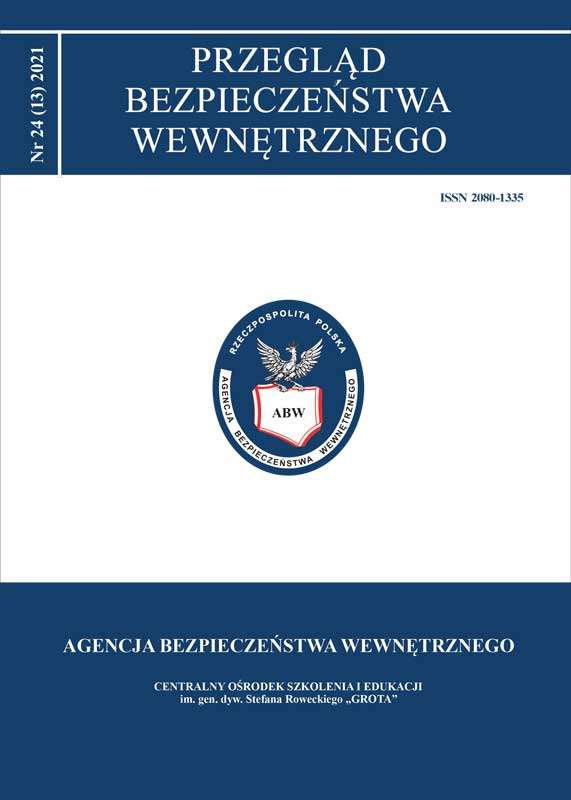Wpływ dezynfekcji pomieszczeń ozonem na skuteczność ujawniania śladów daktyloskopijnych na powierzchni papieru metodą DFO w dobie pandemii SARS-CoV-2
The effect of ozone disinfection of rooms on the efficacy of revealing dactyloscopic traces on the surface of the paper using the DFO method during the SARS-CoV-2 pandemic
Author(s): Tomasz Szczepański, Urszula Więckiewicz, Barbara Konior, Patryk PucułekSubject(s): Politics / Political Sciences, Politics, Security and defense
Published by: Wydawnictwo Uniwersytetu Jagiellońskiego
Keywords: fingerprints; dactyloscopy; DFO; ozone; paper; disinfection; forensics
Summary/Abstract: The article presents the results of research aimed at determining the extent to which ozone used for disinfecting rooms affects the possibility of developing fingerprints on paper using the DFO method. A sudden increase in COVID-19 cases has placed the focus on disinfection techniques for user safety. It is also becoming important to ensure the safety of parcels addressed to various recipients by inactivating pathogens, while maintaining the possibility of examination that can identify the sender, which is important from the point of view of forensics. Ozonation is a disinfection technique that has been used for many years, in particular for water treatment or in the food industry. The experiments were carried out in rooms with a cubature of approx. 20 m3 using an ozone generator available on the market. The obtained ozone gas concentration did not exceed 10 ppm. The conducted research confirmed that the traces of fingerprints left on xerographic paper placed in a room subjected to ozonation in a concentration not exceeding 10 ppm are not damaged and can be successfully developed with the DFO method.
Journal: Przegląd Bezpieczeństwa Wewnętrznego
- Issue Year: 13/2021
- Issue No: 24
- Page Range: 277-293
- Page Count: 17
- Language: Polish

